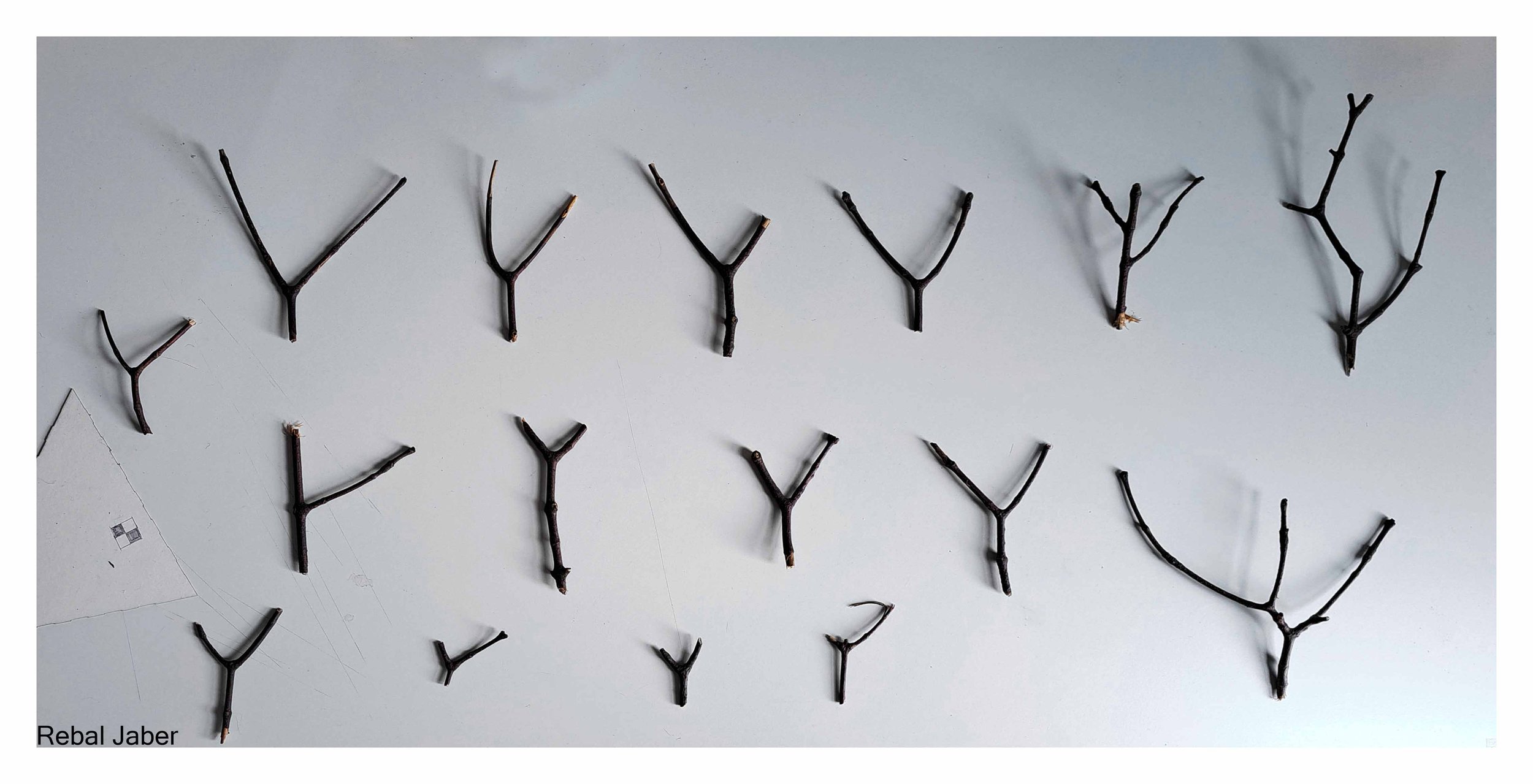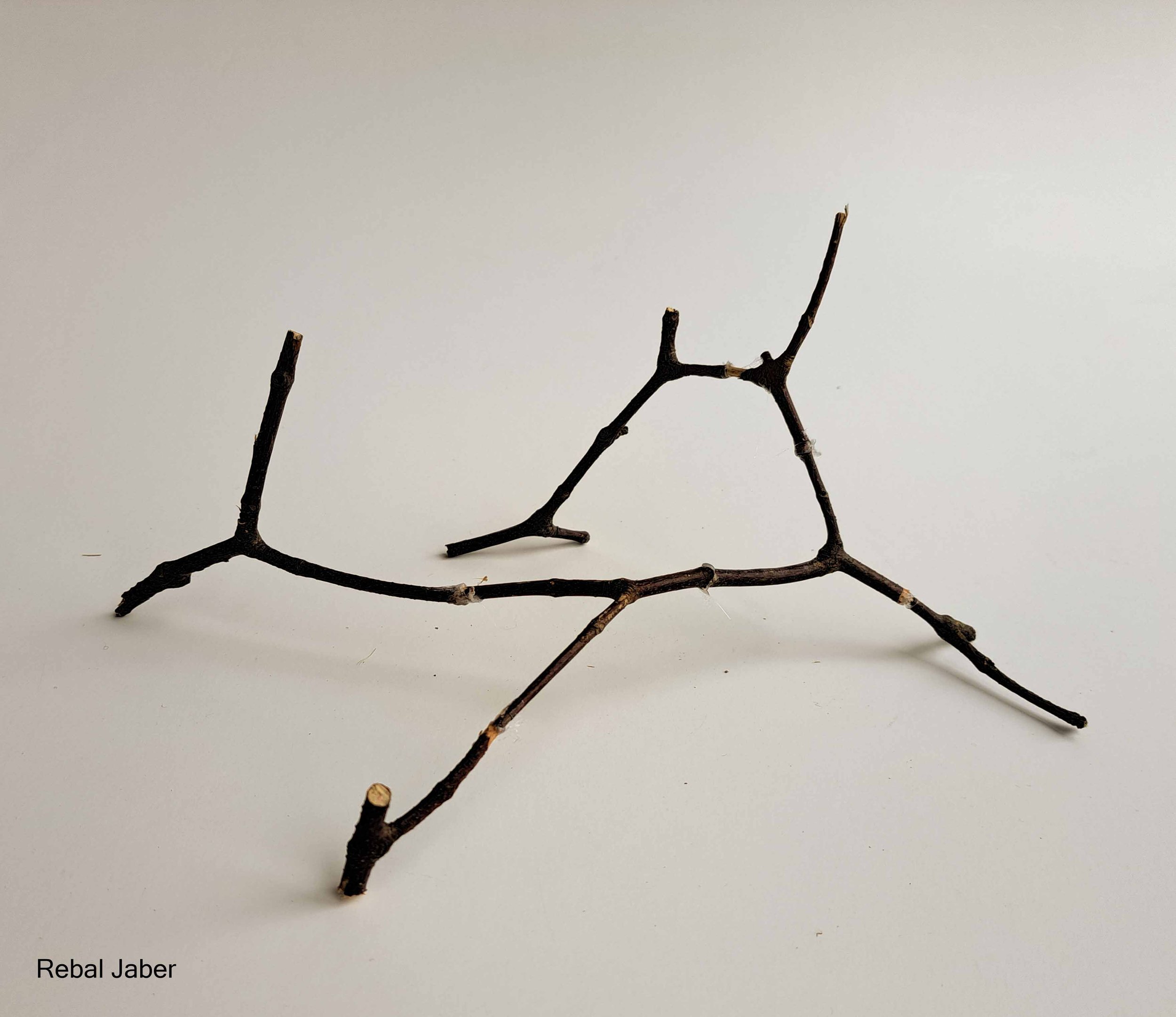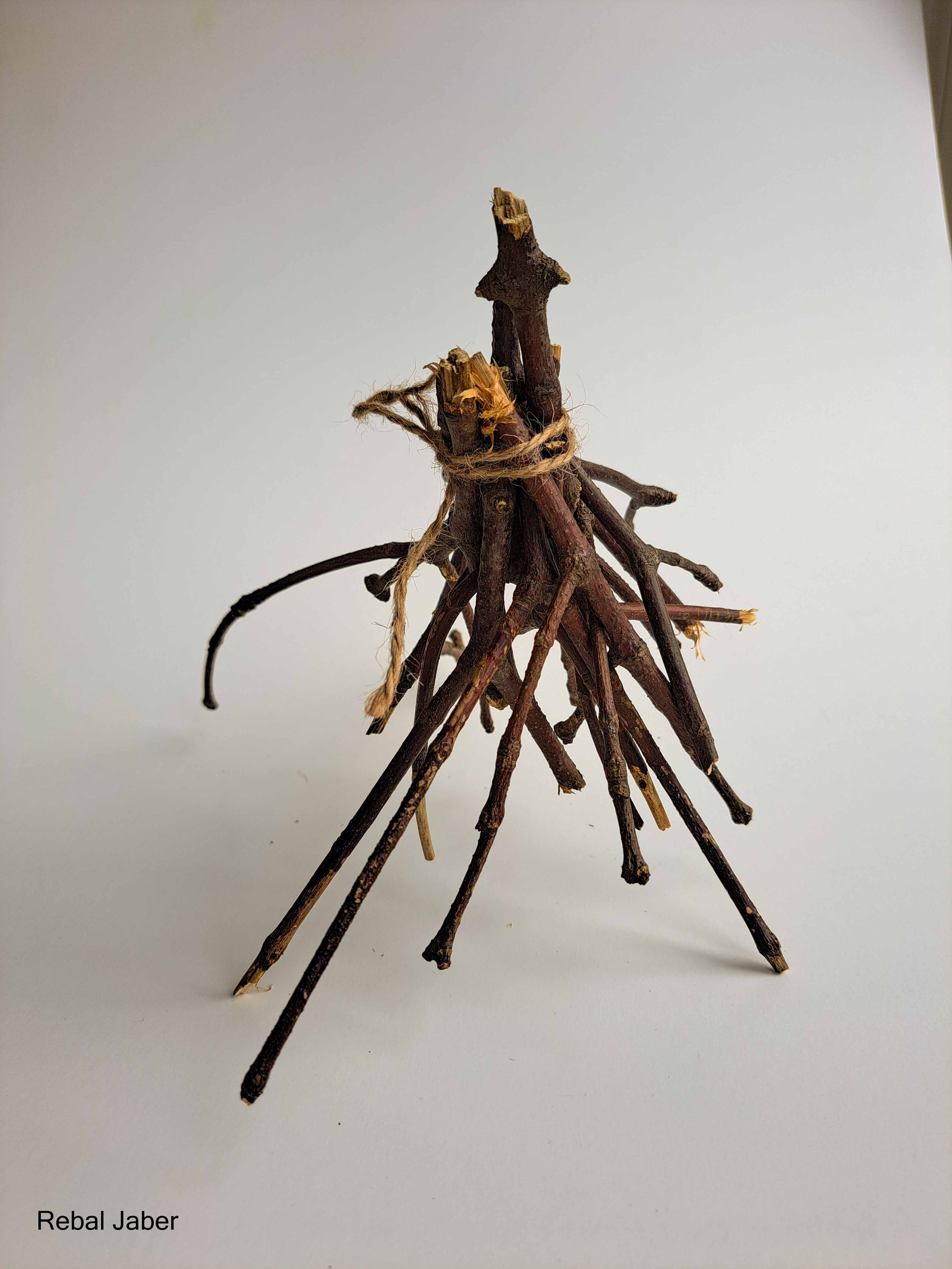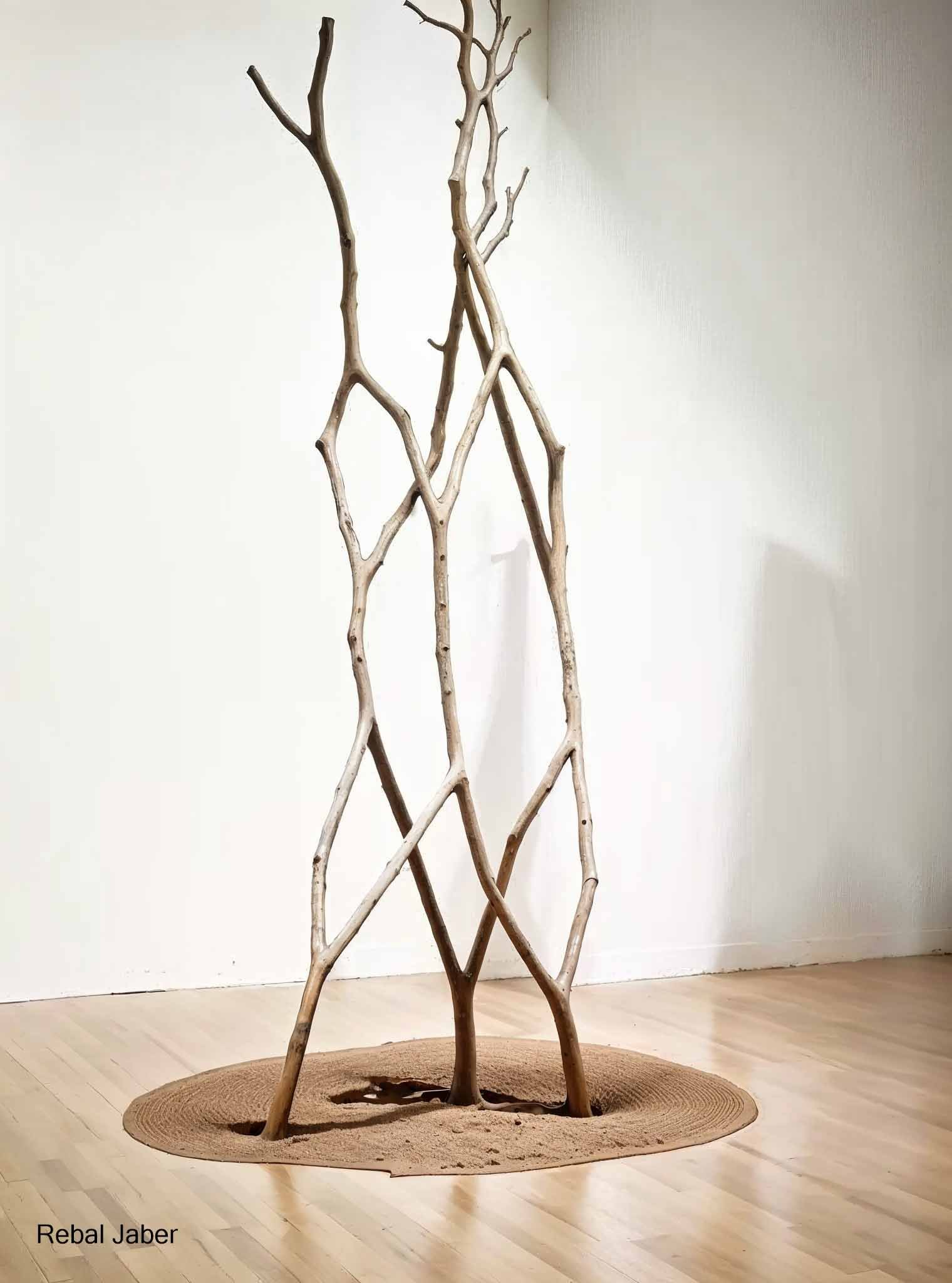
Forking Nature
Discover the innovative integration of tree forks in contemporary architectural design, promoting sustainability and eco-friendly construction. This project showcases the use of natural geometries and renewable materials to create strong, aesthetically pleasing structures.
Project Overview
The project demonstrates the process of incorporating tree forks into building designs, from sourcing and preparing the materials to advanced computational design and fabrication techniques. This approach not only highlights the beauty of natural forms but also underscores the importance of sustainable practices in modern architecture.

First visit to forest in Detmold, Mozartstrasse, some land art made by people after a windy storm which destroyed many trees. This form looks like a house for pets, source: author.

First visit to forest in Detmold, Mozartstrasse, large chunks of trees, source: author.


30. Photo on the way back from a forest trip, holding many tree forks inside a bag.

A sculpture of wooden sticks created by grouping many elements, resembling a warrior or monster of sticks.

34. A bird nest-like structure created by storing tree forks in the forest.

Photo of a small part of a tree with some leaves and plastic wire on a white paper background.

Sculpture prototype with aggregation of small tree forks on a white background.

A sculpture of wooden sticks created by grouping many elements, resembling a warrior or monster of sticks.

Form exploration with 10 elements using straw as connections.arching truss., credits, source

55. Model of tree forks and elastic wires to understand the process of relaxation of many elements together.

Front view of sculpture prototype, stacking multiple large wood elements on top of each other until they fall by gravity.

Form exploration with 10 elements using straw as connections.arching truss., credits, source


Form exploration using wires.

Model of tree forks and elastic wires to understand the process of relaxation of many elements together.

Art board and form exploration with complex Y shapes, showing the process of minimizing the distance between anchor points.
The Process
Sourcing Tree Forks: Local forests and gardens around Detmold, Germany, provided naturally occurring tree forks, which were carefully selected for their unique shapes and structural potential.
Preparation: The tree forks were dried, scanned, and cataloged to create a comprehensive database for digital design.
Design and Fabrication: Using advanced software like Rhino and Grasshopper, the natural forms were integrated into architectural elements, combining traditional woodworking techniques with modern digital tools.



Ring sculpture tree forks, inside a studio, source: author, made with MidJourney at the start of the thesis to imagine the outcomes.

Manual testing on the ground with large elements, tree shape.

3D rendering with AI, showing the chosen configuration as a roof design and connecting

Photo of a small part of a tree with some leaves and plastic wire on a white paper background.

3D diagram showing the chosen configuration of the tree forks, showing the point cloud on

Design board of tree forks. Experimenting with wires and cardboard, source: author.

3D rendering of the final sculpture with AI rendering, inside a bright space with natural light. rendering, showing the overall structure inside a bright space with natural light.
Innovative Techniques
Computational Design: Leveraging the power of computational algorithms to optimize the use of natural forms in architecture, ensuring structural integrity and aesthetic appeal.
Sustainable Practices: Emphasizing the use of renewable materials and minimizing waste by utilizing the natural geometry of tree forks.
Impact and Benefits
Environmental Sustainability: Reducing reliance on industrial materials and promoting the use of natural, renewable resources.
Aesthetic and Functional Design: Creating visually striking and structurally sound architectural elements that celebrate the beauty of nature.





Impact and Benefits
Environmental Sustainability: Reducing reliance on industrial materials and promoting the use of natural, renewable resources.
Aesthetic and Functional Design: Creating visually striking and structurally sound architectural elements that celebrate the beauty of nature.
About the Researcher
Led by Rebal Jaber, under the guidance of Professor Ernst Thevis and Prof. Dipl.-Ing. Hans Sachs, this project represents a significant contribution to sustainable architecture and design.
Rebal Jaber holds a Master’s degree in
Computational Design from Technische
Hochschule Ostwestfalen-Lippe. With a
background in architecture and a passion
for sustainable design, Rebal Jaber
combines traditional craftsmanship with
cutting-edge digital fabrication techniques
to explore innovative solutions
in timber construction. This research,
focusing on the utilization of tree forks
as structural elements, reflects Rebal’s
commitment to promoting sustainable
practices and reducing waste in the
architectural industry.
